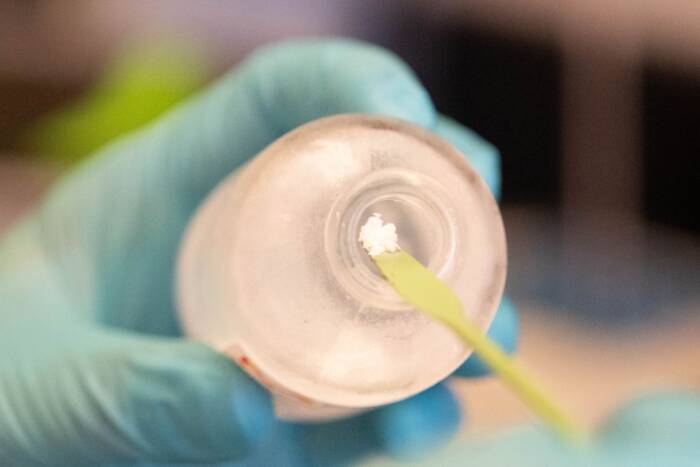Paul Bieniasz granted tenure
Virologist Paul Bieniasz, who studies retroviruses such as HIV, has been instrumental in discovering how they colonize cells and interact with host proteins as they replicate. This summer, the university’s Board voted to award Dr. Bieniasz tenure and promote him to professor.
Dr. Bieniasz’s research has two main themes — parsing the mechanisms that viruses use to assemble new viral particles and understanding how certain cell types and organisms have become resistant to infection. The work has led to the discovery of cellular proteins that are parasitized by retroviruses to assist in their replication. It has also elucidated defenses evolved by organisms to counter attacking viruses and the means viruses have discovered to evade them.
In particular, in 2008, Dr. Bieniasz’s lab discovered a “restriction factor” called tetherin that cells employ to block the spread of retroviruses, first published in Nature. In experiments published last year in Cell, he and his colleagues showed that tetherin, which is shaped like a rod with membrane anchors at each end, takes hold of the lipid envelopes that house newborn HIV viral particles and “tethers” them to an affected cell’s membrane, stalling further colonization. Tetherin reveals a clever antiviral strategy because it targets the lipid envelope, which is shared by many viruses and does not mutate as do the encased viral proteins. Unfortunately, many viruses have engineered a way to thwart it. HIV, for instance, produces a protein called Vpu, which appears to block tetherin from taking root in the lipid envelope of the virus. But understanding these interactions may point the way to pharmaceutical agents that could prevent Vpu from blocking tetherin, a potential treatment for HIV.
Dr. Bieniasz, who is head of Rockefeller’s Laboratory of Retrovirology, a scientist at the Aaron Diamond AIDS Research Center (ADARC) and a Howard Hughes Medical Institute investigator, has also mined the “fossil record” of extinct retroviruses that is contained in the genomes of primates, including humans. In 2007 his lab reanimated parts of an ancient virus known as HERV-K to study whether defensive proteins of the modern innate immune system could defend against them. Studying the proteins that extinguished retroviruses millions of years ago may provide new clues to fighting the ones that plague us today, he says.
Dr. Bieniasz has also made important strides toward developing a reliable animal model for HIV, the lack of which has long hampered research on the virus. In collaboration with his wife, Theodora Hatziioannou, a scientist at ADARC with whom he has worked closely over the years, Dr. Bieniasz succeeded in infecting a pig-tailed macaque with an HIV strain by altering just one gene in the virus. With further refinements, Dr. Bieniasz hopes this monkey model will enable scientists to directly study the disease in animals, and eventually to test new vaccine candidates.
Dr. Bieniasz’s interest in HIV dates to the earliest days of the epidemic, when he was a young secondary school student in England. More generally, retroviruses open a window on a broad range of biological problems. “Working on retroviruses allows you to explore so many areas of biology — evolution, imaging and cell biology, molecular biology — while at the core remaining a virologist,” Dr. Bieniasz says. “You never get bored.”
He looks forward to improving the monkey model for HIV, which could have important clinical implications, and also finding new antiviral genes that code for proteins, such as tetherin, that could inspire new strategies for fighting the virus. “We’re putting a lot of effort into discovering new antiviral genes,” he says. “I think it’s possible that we’re just beginning to scratch the surface of how sophisticated these defenses are.”


